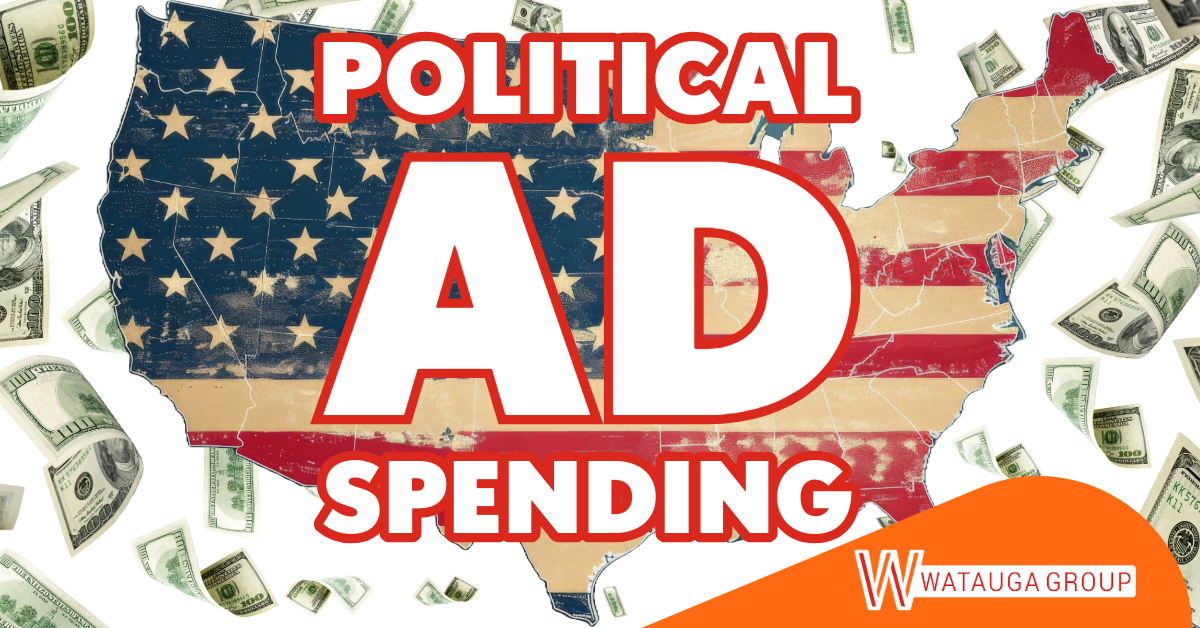In the 2024 election cycle, political advertising in the United States is facing significant upheaval following Joe Biden’s withdrawal and Kamala Harris’ entry into the presidential race. Initially, total spending was projected to surpass $12.3 billion, nearly a 30% increase from the 2020 cycle. However, this unprecedented shift casts uncertainty on political spending patterns for the immediate future and remaining three and a half months until the election. The DNC’s nominee announcement, which could happen as early as this week, will be pivotal, as the Harris campaign’s fundraising efforts are already breaking records and will heavily influence the final expenditure.
Traditional Media’s Enduring Role
Despite the rapid growth of digital media, traditional channels, particularly television, continue to dominate the political advertising landscape. Local TV, in particular, remains a cornerstone of political campaigns. The extensive reach and established credibility of TV make it a preferred medium for delivering campaign messages to a broad audience. In the 2024 election cycle, traditional TV is expected to command the majority of political ad spending accounting for 57.3% of the total.
The Rise of Digital Platforms
Connected TV (CTV)
A significant shift in political advertising is the meteoric rise of video streaming consumption through Connected TV (CTV) devices. CTV is expected to capture nearly half of digital political ad outlays in 2024, a more than 6x increase from the 2020 cycle. The appeal of CTV lies in its ability to deliver hyper-targeted advertising, which is particularly valuable for down-ballot races and smaller campaigns seeking to optimize their reach and impact.
Social Media
While social media political ad spending is projected to rise by 86.7%, its share of digital political ad spending is projected to decline. This decline is attributed to the rapid expansion of CTV. Platforms like Facebook, Instagram, and Twitter remain vital for engaging specific voter demographics, but the increasing importance of video content and the immersive experience provided by CTV are reshaping digital advertising strategies.
Google’s Growth
Google’s political ad revenues are projected to nearly match those of Meta, driven by the growth of YouTube as a critical video platform. This trend underscores the increasing importance of video content in political advertising and the shift towards platforms that offer both broad reach and precise targeting capabilities.
Strategic Focus on Battleground States
Political advertising is especially intense in the highly contested presidential battleground states and is expected to ramp up quickly with Harris’ official announcement as a candidate. Nearly $190 million has already been spent in Pennsylvania, more than double what was spent at this time four years ago. This surge in spending is part of a larger trend where campaigns focus their financial resources on a few key battleground states. This pattern is also seen in other competitive states like Arizona, Georgia, Michigan, Nevada, North Carolina, and Wisconsin.
Impact of Out-of-Home (OOH) Advertising
A comprehensive report commissioned by the Out of Home Advertising Association of America (OAAA) and conducted by Morning Consult highlights the significant impact of Out-of-Home (OOH) advertising on voter behavior and perception. The study surveyed 1,616 likely voters and found that 68% had recently been exposed to political advertising through OOH mediums. Of those exposed to OOH ads in the past year, 56% deemed them truthful and accurate.
OOH advertising is particularly effective in resonating with younger, multicultural, educated, and higher-income audiences. The medium’s authenticity, creative capacity, and digital integration make it a powerful tool for engaging key voter groups. OOH political ads are credited with influencing nearly half of the respondents, especially younger generations and those with higher socioeconomic status. The non-intrusive nature and visibility of OOH ads further enhance their appeal and effectiveness.
Conclusion
As the 2024 U.S. election season progresses, an unprecedented surge in political advertising expenditure is transforming the landscape of voter engagement fueled most recently by Biden’s withdrawal from the race and Kamala Harris’ official announcement to run against former President, Donald Trump. Traditional TV remains a dominant force, while digital platforms, especially CTV and OOH, are gaining prominence for their targeted and genuine outreach capabilities. The integration of sophisticated digital targeting and social media tactics is enhancing the efficiency and impact of political ad campaigns. This evolving landscape underscores the need for strategic utilization of both traditional and digital media to effectively influence voter behavior and enhance turnout. The next few weeks will reveal whether recent developments will slow the projected spend or if the record-setting projections of $12.3 billion will be on target, or surpassed.





